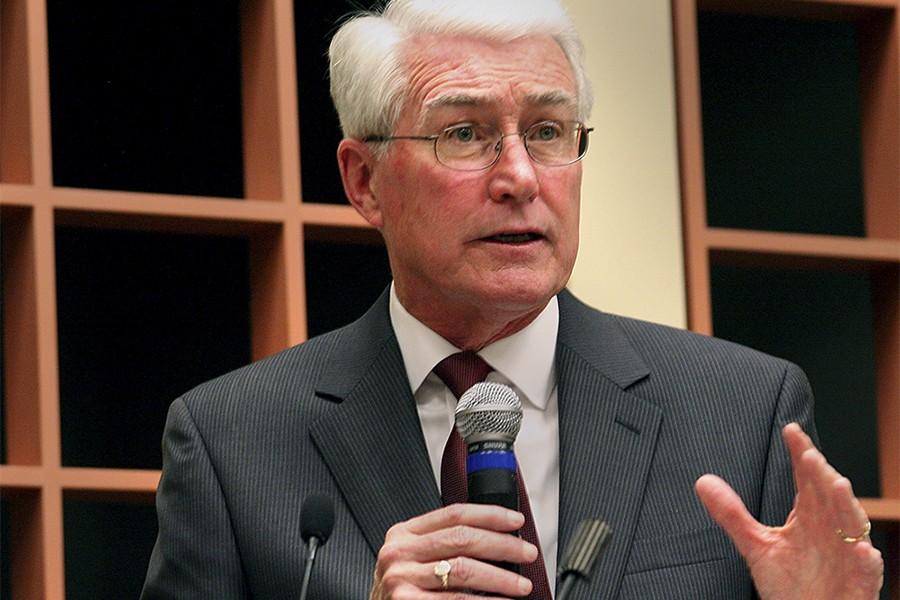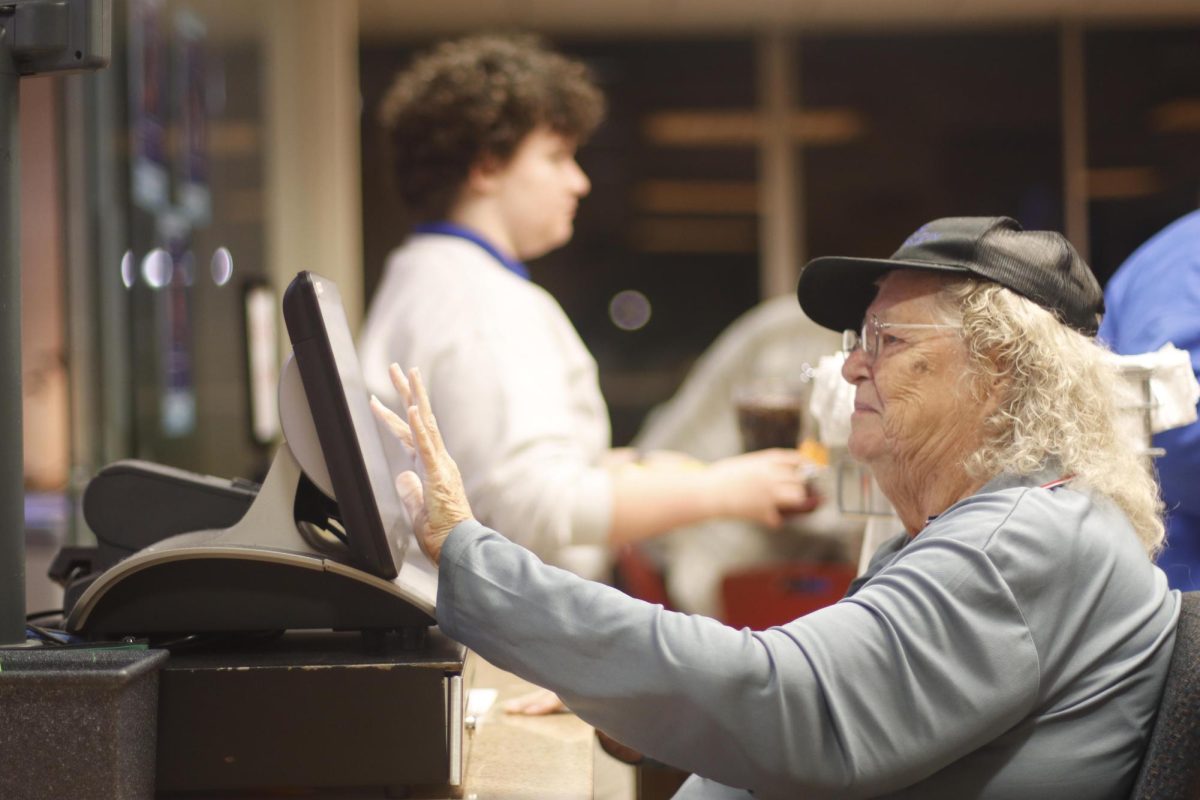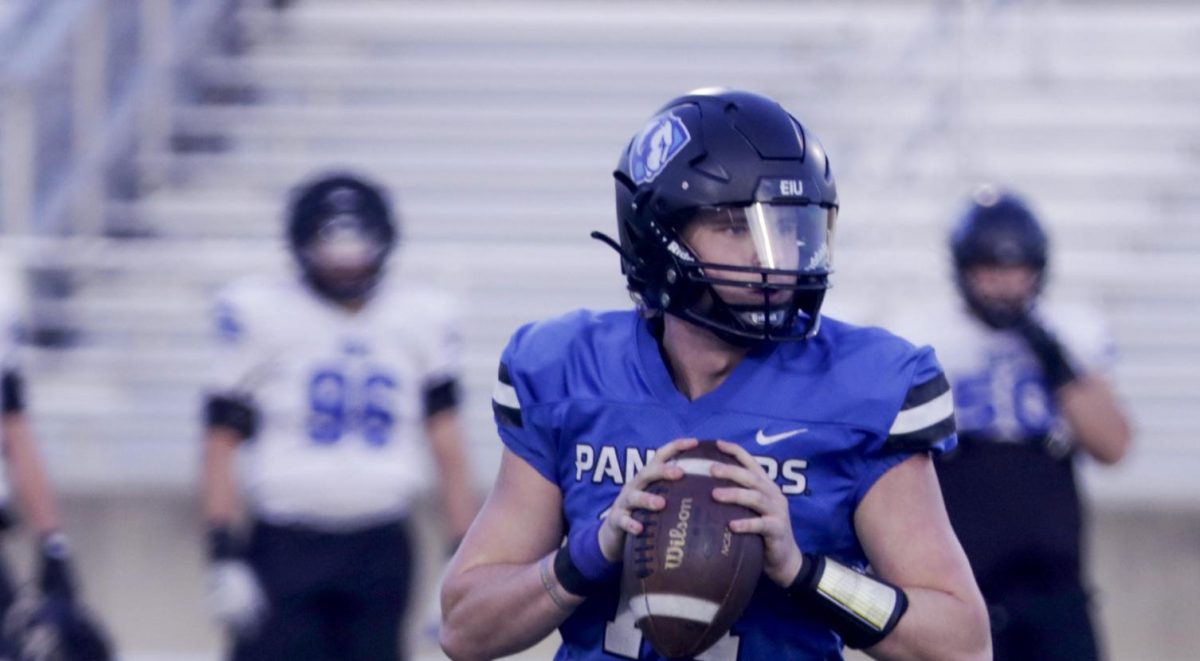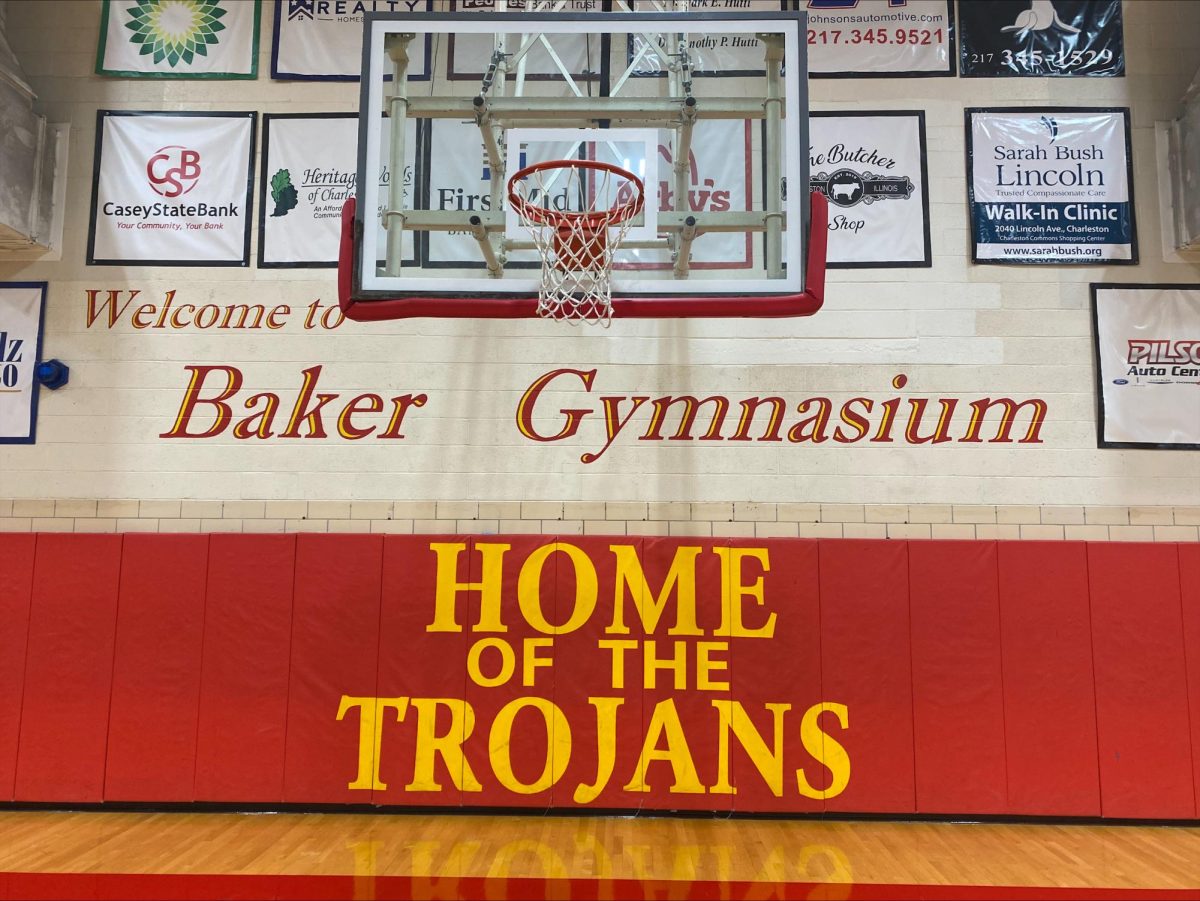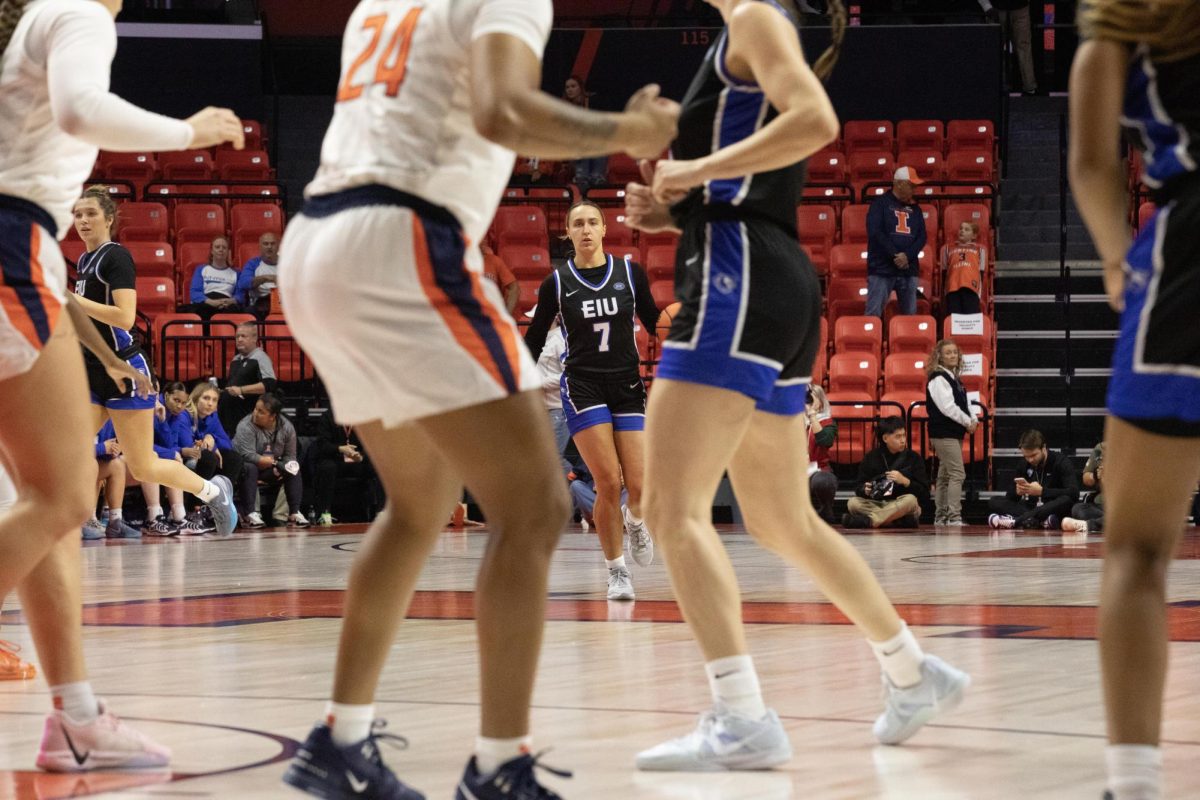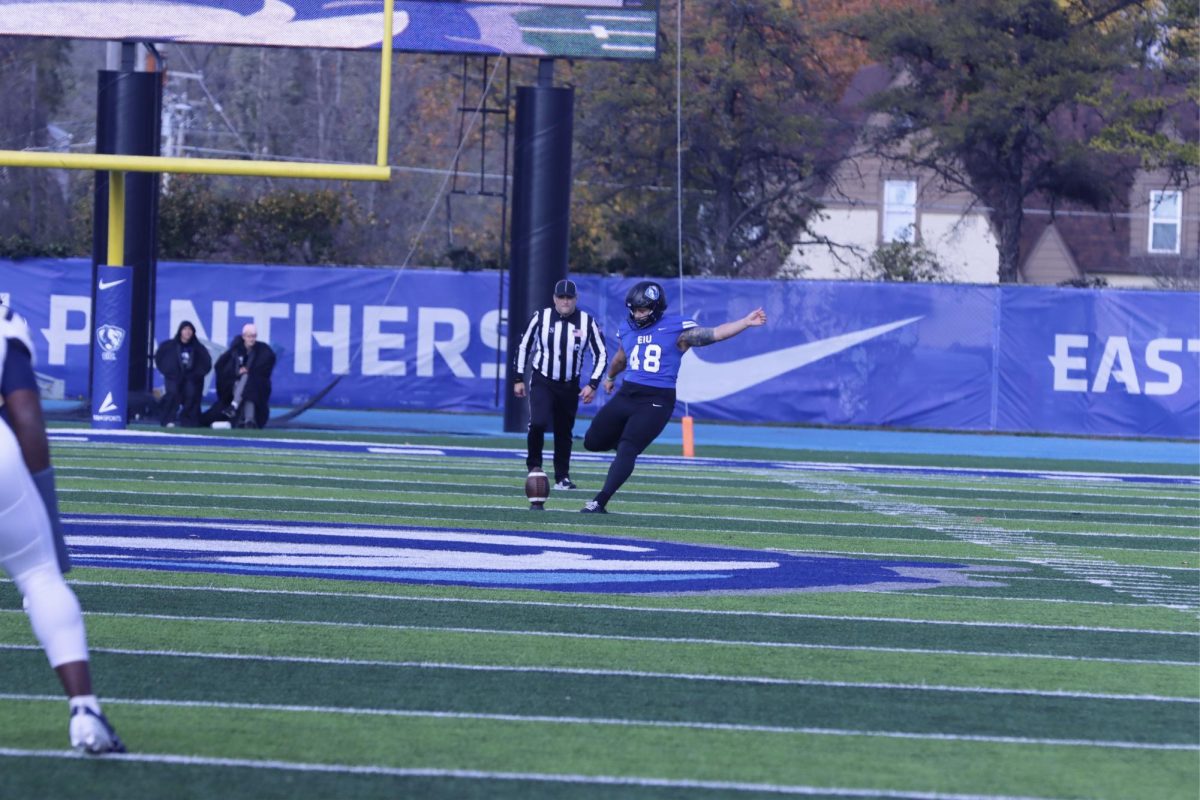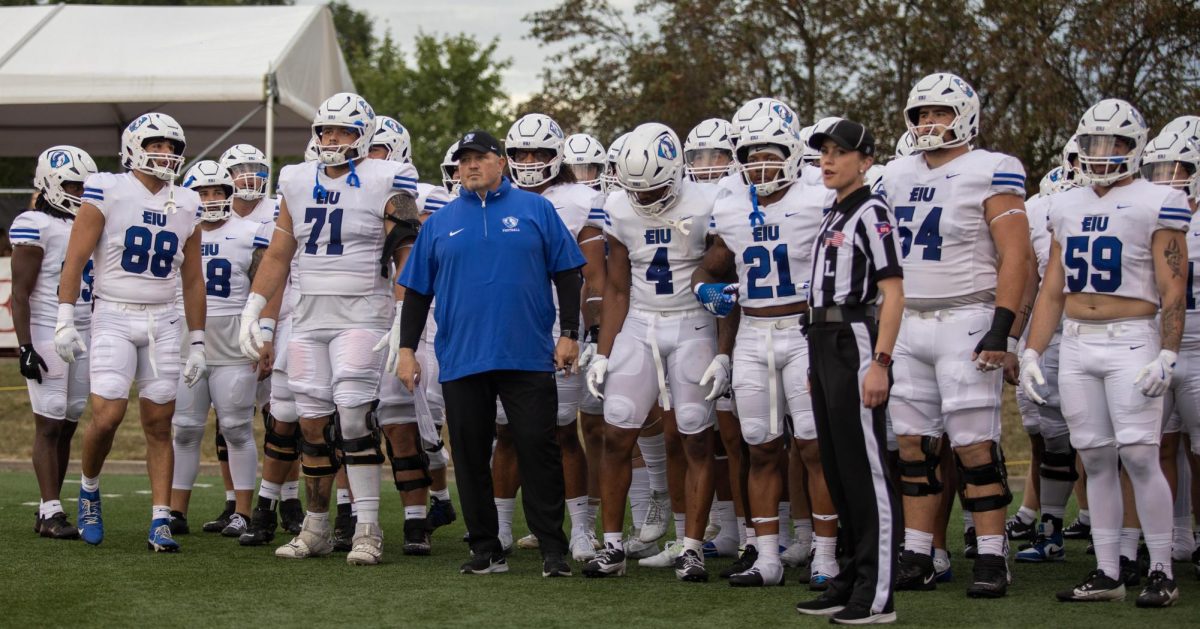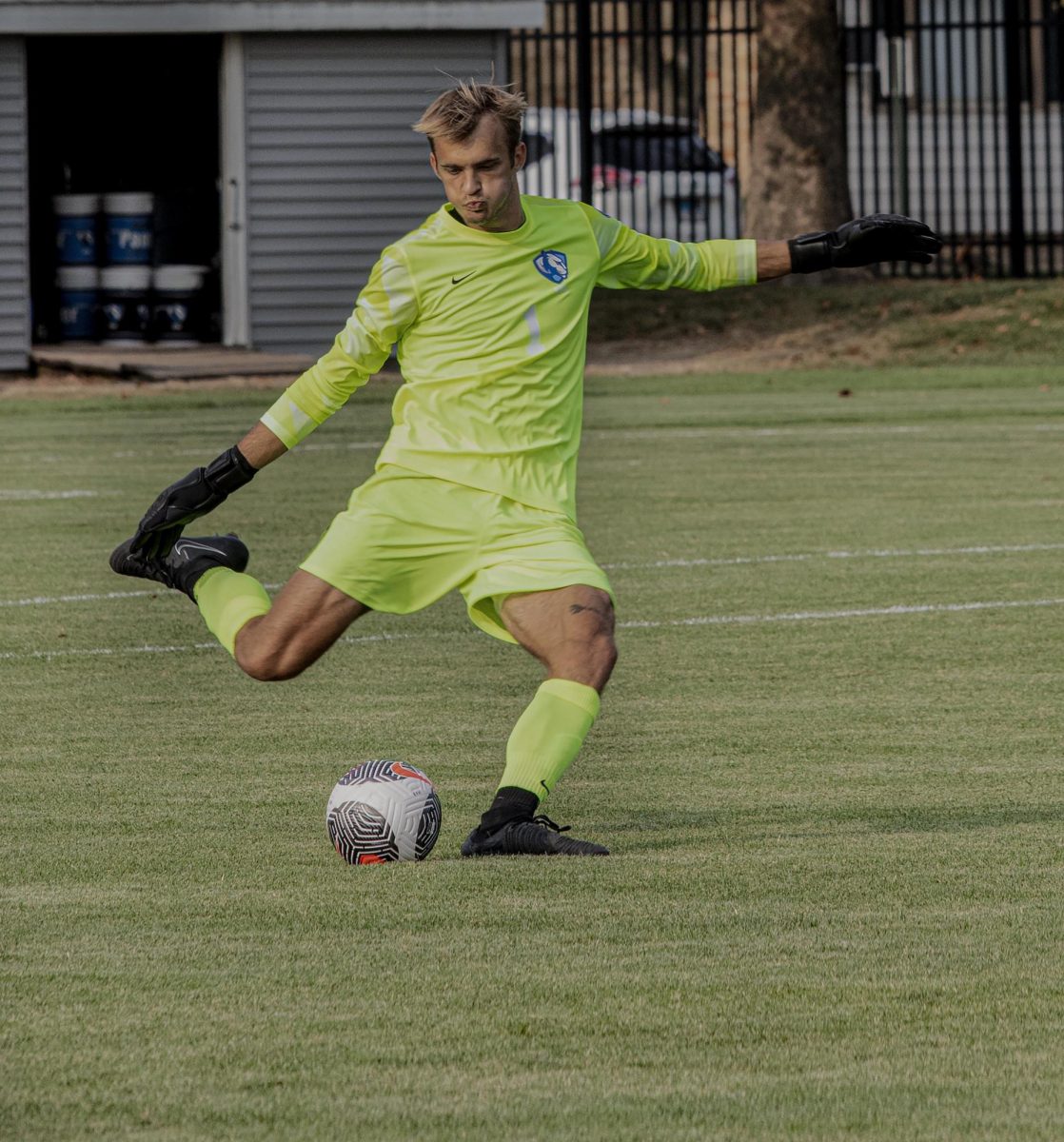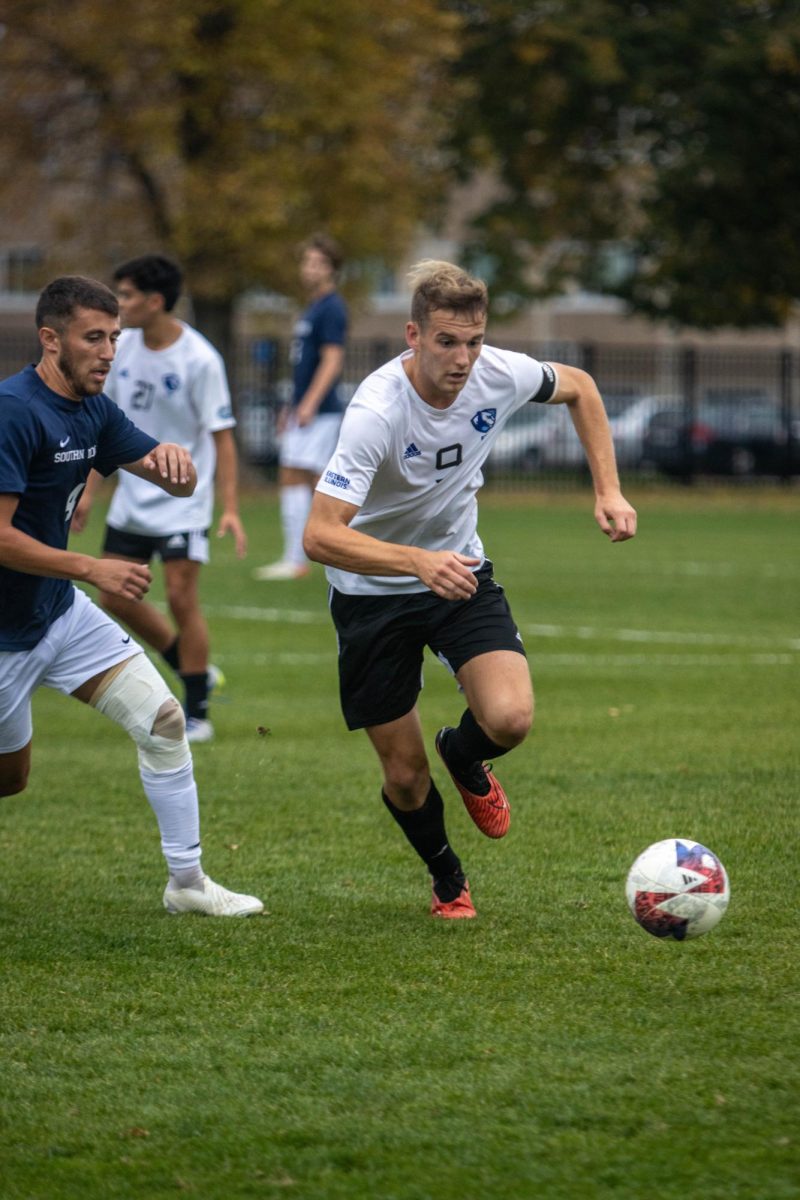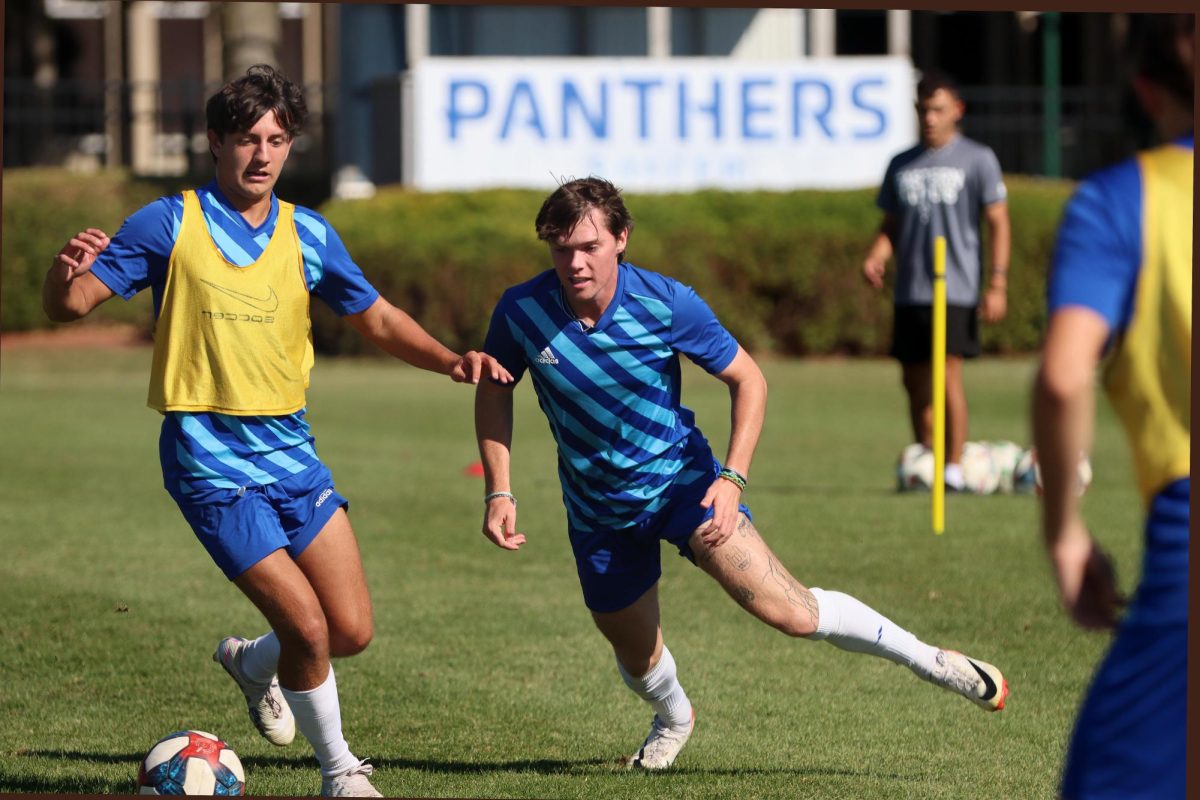Blue light special
The speakerphones on the 19 blue pole emergency phones should be used for emergencies – not in cases of hunger.
But some prank-loving students did just that.
“We’ve had people try to order quarter pounders with cheese,” said Adam Due, acting chief of the University Police Department referring to students using the emergency phones for recreation. “But they don’t think it’s as funny when we catch them.”
The intent of the emergency phones around campus is to serve as the UPD’s scarecrow. And by remaining inactive, the emergency phones accomplish their purpose.
Due, employed since 1986, said the phones are used to enhance customer service.
“People feel better knowing there is communication in so many feet of them walking from the stadium parking lot, or back at night,” he said. “They can see one of those blue lights, knowing there is someone else on the other line.”
On that other line is an operator from the Coles County 911 Dispatch Office, which is located near the Coles County Airport, Due said.
Pressing the phones’ white button will create a direct link through underground phone wiring from pedestrian to the dispatch office.
“You push the button and someone will ask if you need a fire ambulance or police,” UPD officer Art Mitchell said.
The siren and strobe light are also activated when the button is pressed, said director of telecommunications Clay Hopkins, whose company handles management of the phone lines.
Due said he could not remember many cases where the call was legitimate, guessing, “definitely less than five and probably less than three.”
The emergency phone system was installed in 1990 after a Student Senate study showed more security measures were needed.
Tom Larson, UPD chief from 1983-2001, said the referendum passed with little resistance.
“We had no alternative for students at night – the buildings might be locked,” Larson said.
Initially, before Coles County implemented 911 in the mid 1990s, the phone lines went directly to the UPD, Larson said.
“It just gave a positive reinforcement and gave an impression that the campus was safe.”
The last instance police help was needed was when one student had an asthma attack a few years ago, said Mitchell, who also said 95 percent of the cases are false alarms.
“It’s not a statistic we keep, but it used to happen quite often,” Mitchell said. “Since most places are so well-lit, it hasn’t happened as much.”
Due said some months have 10 or 15 false alarms, but others have none.
When the alarms do come, the culprits are not only college students wanting to pull a prank, but also grade school children.
“During the summer, the phones on inner campus are pushed,” Mitchell said. “When we have kiddy camps with groups of 40 or 50 grade school kids or juveniles, they want to see what the button will do.”
Each 7-foot-high emergency phone has a hands-free speaker, which activates when the button is pushed, that is used for two-way communication – similar to how fast food is ordered in the drive thru.
But UPD officers say they deliver service much faster than McDonald’s.
“An officer will be dispatched and they are usually there in a minute, no matter what,” Mitchell said.
If a student is caught setting off one of the emergency telephones, he or she will be referred to the Judicial Board or criminal courts on charges of disorderly conduct.
In most cases, alcohol is also involved and a campus citation is written.
“In most cases, when the alarm is sounded it’s usually kids walking back from the bars,” Due said. “They think it will be fun to take an officer from his position and away from duty.”




